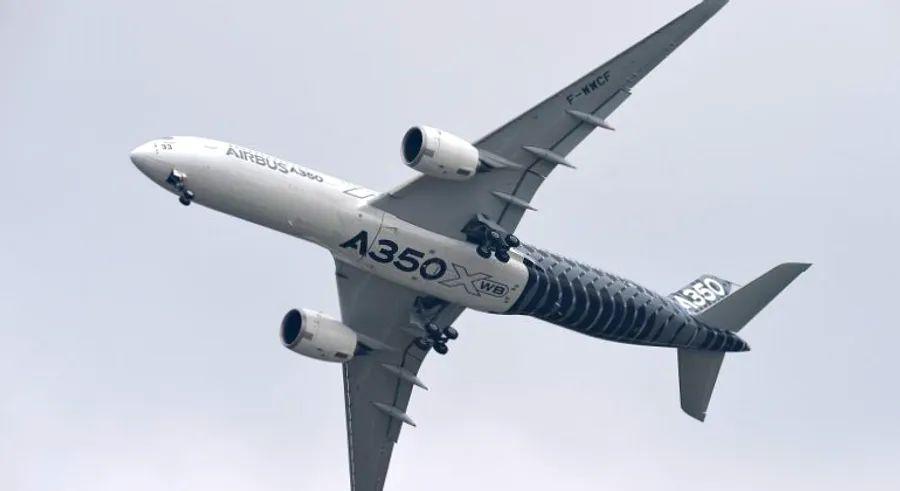Singapore Airshow: 5 key trends transforming the future of aviation

While some recent airline seat patents may seem alarming, the Singapore Airshow in February 2016 offers a more optimistic outlook, showcasing an aviation future that’s truly exciting.
The 2016 edition of Asia’s largest airshow focused heavily on cutting-edge technologies, featuring dedicated forums and a full exhibition zone to explore these innovations.
We spoke with industry experts to find out what changes are on the horizon in the coming years. Here are five major advancements we can expect to see:
Next stop: Singapore
1. The rise of 3D-printed aircraft?

Airbus faced delays during the early development of the A350, but turned to 3D printing to speed up production. Today, more than 1,000 parts of the A350 are made using 3D printing, making it the most 3D-printed commercial aircraft.
This is a trend that will continue to expand.
“Initially, it will be smaller, replaceable parts like handles that are 3D printed,” explains Ido Eylon, general manager of Stratasys for Southern Asia and the Pacific. “It's already happening, albeit on a smaller scale. We’ll see more industries taking interest soon.”
Beyond non-essential airplane components, even tools used in aircraft manufacturing can now be 3D printed.
“3D printing simplifies the production of certain parts, helping to save both time and costs,” Eylon states.
It also reduces weight. 3D-printed components are 30-55% lighter and require 90% less raw material compared to traditional manufacturing methods.
Could we 3D print an entire airplane? It's still a distant vision, according to Eylon.
2. In-flight entertainment that multitasks

Seatback screen or tablet?
“Both,” says Giaime Porcu, media relations officer at aviation tech firm Thales. “It’s like being at home—you might watch TV, work on your laptop, and play on your smartphone all at once.”
Thales' new in-flight entertainment system, AVANT, is designed to fit seamlessly into modern travel habits. Controlled by an intuitive Avii remote, similar to a smartphone, it’s primarily targeted for use in premium cabins.
The system serves as a secondary display, letting passengers, for example, check out ratings for other movies while one is playing on the main screen. Personal smartphones can also sync with the system.
Movies can be explored and saved for later before boarding, and if you don’t finish a film, it can be resumed from the same point on the next flight, making sure no movie-watching moment is lost.
Singapore Airlines has signed on to use the system, with AVANT set to feature on its new A350XWBs in 2018. The package also includes the world’s lightest seatback touchscreen for economy class and Ka-band internet, which is currently the fastest in-flight connectivity available.
Plane spotting: A beginner’s guide to identifying commercial jets
3. Eye-tracking control
While Thales didn’t showcase it at the event, they did give us a glimpse into their upcoming eye-tracking technology. This next-gen in-flight entertainment system is designed for business and first-class passengers, where seat monitors may be out of arm's reach. Eye movements will control the screen.
For example, if a passenger looks away—perhaps when the flight attendant serves champagne—the screen will automatically pause the movie. It resumes once the passenger refocuses on the screen. Thales anticipates this technology will be ready in five to seven years.
Your exclusive tour inside the latest luxury business jets
4. Adapting apps

It turns out we’ve been carrying around unnecessary digital clutter. Developers are now creating adaptable apps that adjust based on a user’s location and needs.
“You don’t want 20 different airport apps on your phone. You want one app that changes to suit each airport you visit,” explains Ilya Gutlin, Asia Pacific president of aerospace IT company SITA.
Unlike today’s static airport apps with fixed maps, the new all-in-one app would use Bluetooth beacons to deliver real-time, relevant information exactly when needed. It could streamline check-ins and even help track luggage.
“If your luggage gets lost, the app will notify you immediately—you won’t have to wait until you reach the baggage carousel,” adds Gutlin.
Miami International Airport recently became the first to install beacons that provide real-time data, including walking times to the gate, information on nearby dining options, and baggage claim updates.
Airfare hacks: 5 smart ways to score cheaper flights
5. Pilots training with virtual reality headsets

With a global shortage of pilots, a Singapore-based engineering firm believes it has a fix. Singapore Technologies Engineering unveiled a new virtual reality headset at the airshow designed specifically for pilot training.
By donning the VR headset, trainees are placed in a fully immersive cockpit environment. They'll receive step-by-step guidance on aircraft operations, using either a side stick controller or motion sensors.
This new technology can overcome the limitations of space and mobility in traditional training. The idea is that pilots can train anywhere with just a headset and laptop, eliminating the need for full simulators. It’s also touted as a cost-effective solution, as it can be easily adapted for different aircraft types and requires fewer instructors.

1

2

3

4

5
Evaluation :
5/5